Peace & Quiet in an Ibizan Finca
Issue 002: On the infamous party isle that's rebranding as an agrotourism hotspot, a renovated farmstead offers a secluded sanctuary where nature—not David Guetta—provides the soundtrack.
Introduction
As young teens in the UK during the early 2000s, we understood that there was only one destination worthy of providing the ultimate ‘good time.’ This was the heyday of Ibiza’s club scene, when it was considered a right of passage to visit the Spanish island as soon as you were old enough to travel with friends. The dream was sold by nighttime radio DJs, who would air sets live from Pacha and Amnesia (some of this music I still listen to regularly), while movies like It’s All Gone Pete Tong and Kevin & Perry Go Large poked fun at the hedonism that awaited on the White Island. I never made this party pilgrimage, instead opting for the Greek resort of Faliraki for my Club 18-to-30 experience (which is another story entirely). So when the opportunity arose to visit Ibiza for the first time last year, I was curious about what I would encounter in this fabled land of all-night ragers and drug-fueled debauchery, and how I would feel about it now in my mid-30s.
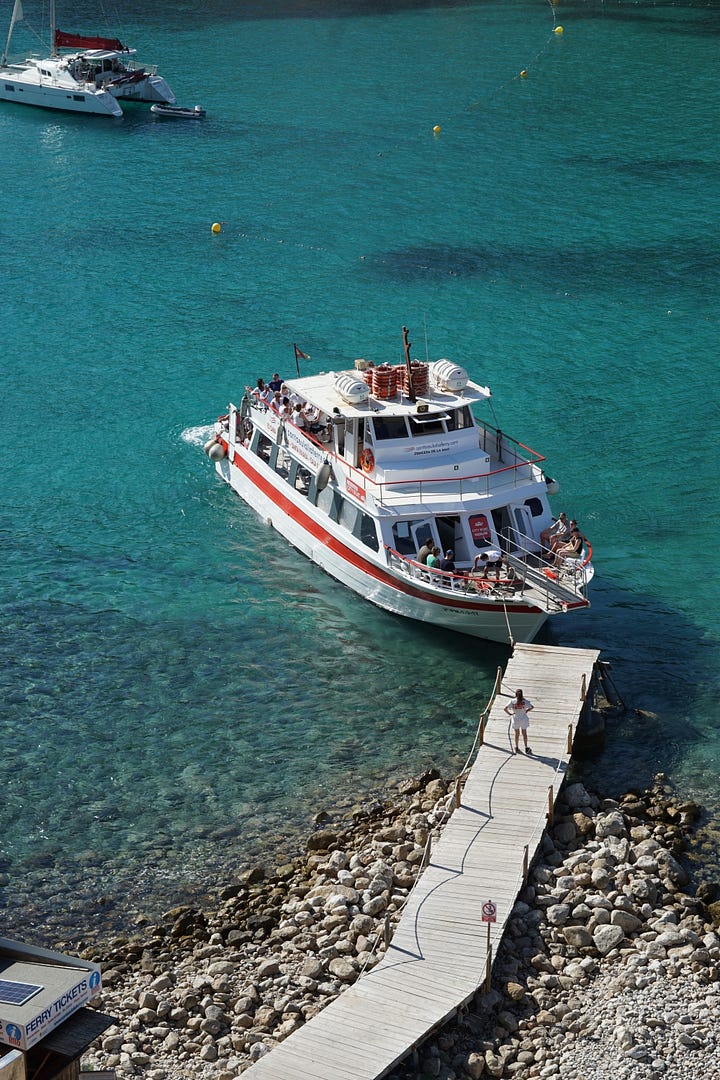
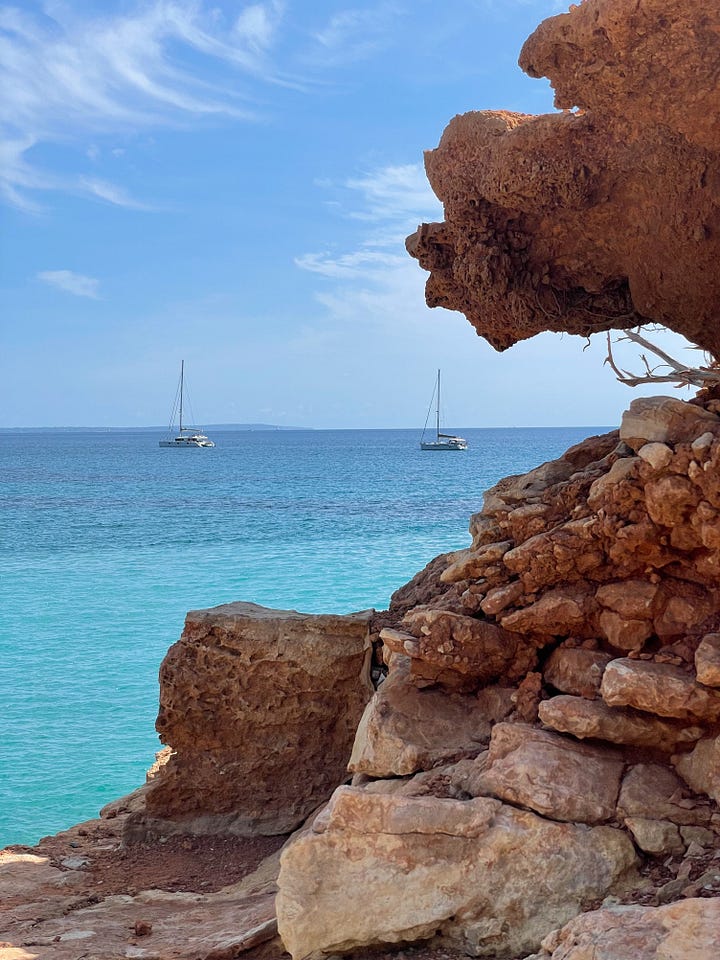

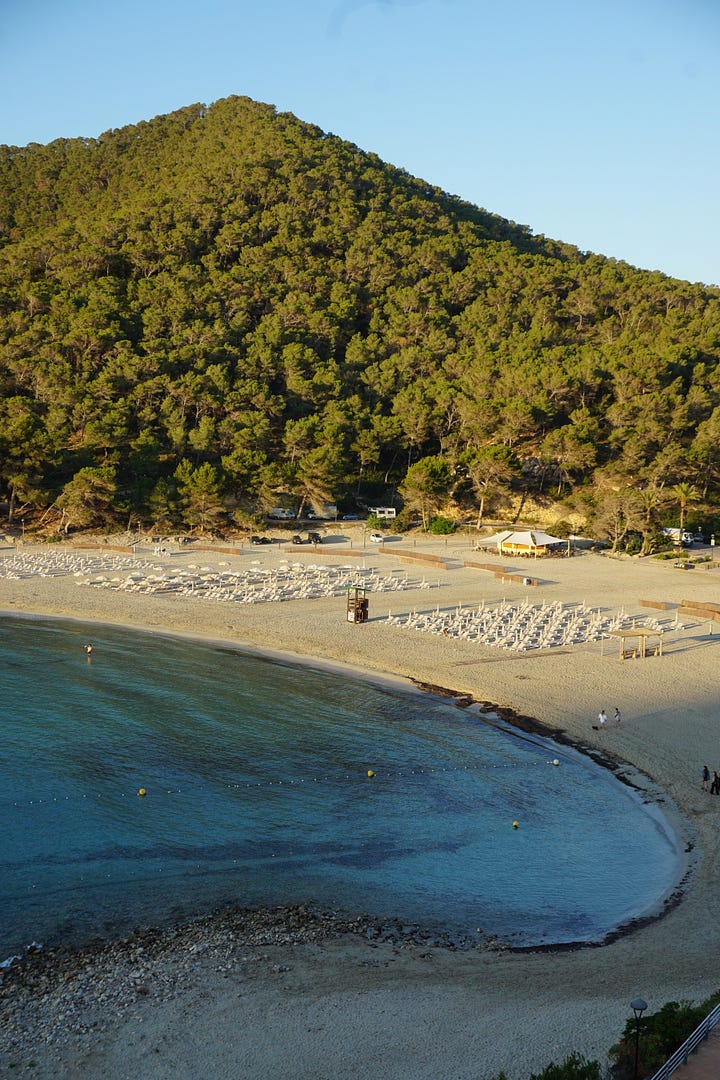
I traveled to Ibiza (ee-BE-tha, or Beefa, because I’m British) with my partner Jonathan and our friend Kevin following a wedding we all attended in Italy. It was September, and the weather was truly perfect—sunny days and light breezes. After a very boozy few days in Tuscany, we were ready for some down time, and since none of us had visited Ibiza before, we agreed to relax, explore, and uncover what the island has to offer beyond the famous nightclubs. What we discovered was so magical that as soon as another chance to visit came up in June this year, Jonathan and I went back and (officially) got engaged(!) on the Ibizan sands. In the process, we also almost got stranded by the incoming tide, which trapped us in an inlet against the sheer cliffs, and had to panic-swim back to safety. Anyway, the photos included in this issue were taken across both trips, but we’ll focus on the first.
Ibiza
We don’t speak enough about how beautiful Ibiza really is. All three of Spain’s Balearic Islands offer breathtaking scenery, Mallorca perhaps taking the cake in this respect, but its smaller neighbor to the southwest has its own wealth of stunning spots that many tourists don’t get to appreciate. Outside the urban centers of Eivissa (Ibiza Town) and Sant Antoni (San Antonio), a slow, relaxed pace has drawn generations of hippies, artists, and free spirits from all over the world, forming a diverse community that evidently cares deeply about the island. Its rich history can be traced back to Phoenician settlers, who were followed in sequence by the Carthaginians, Romans, Muslims, and Spanish Christians—all leaving their mark on Ibiza’s place names, traditions, and culture.
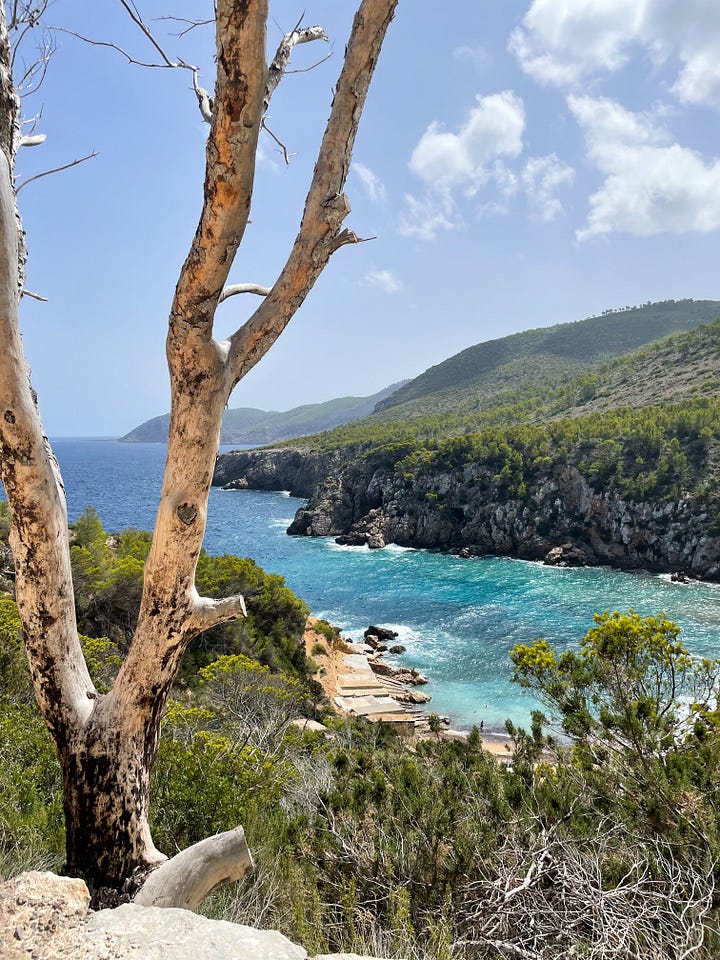
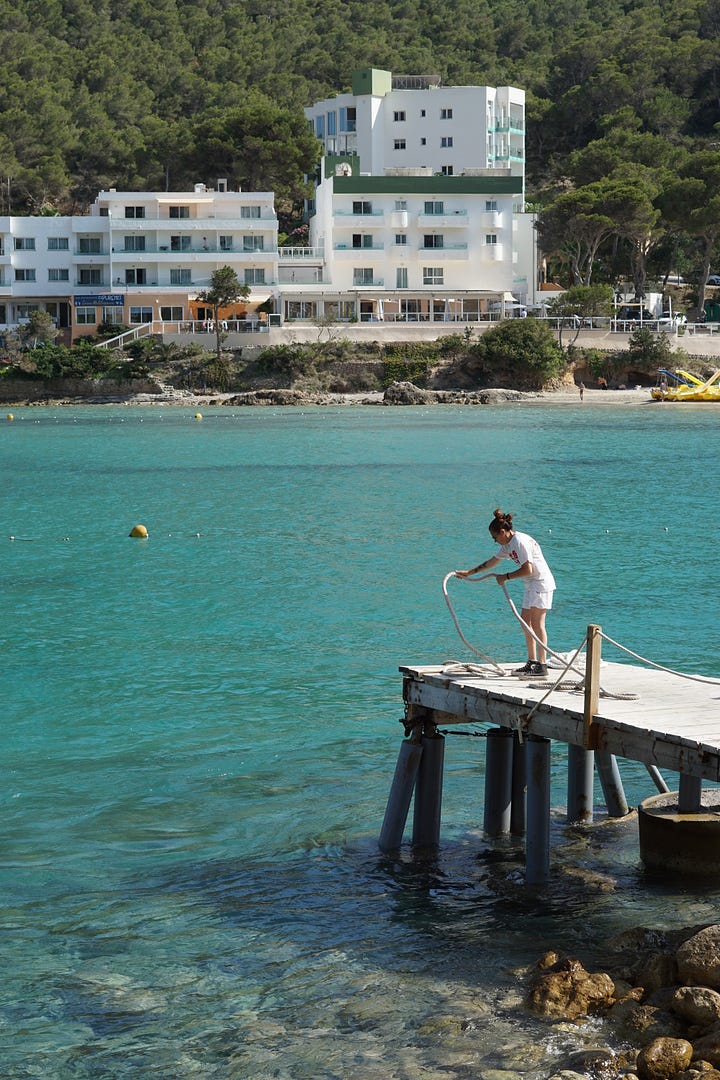
It wasn’t until the 1970s that the party goers began descending upon the island, pivoting its reputation to that of global clubbing mecca, which remains to this day. But recently, a noticeable shift towards agrotourism and push to become a wellness destination—reconnecting with its bohemian roots—has really gathered steam. Many of the historic farmhouses, known as fincas, across the agricultural land away from the coasts have slowly been renovated into boutique hotels or rentable villas, offering remote retreats for those searching for the opposite of a wild time. And it was in one of these special hideaways that we spent our three nights.
Aguamadera
Set among 27 acres of pine forests, olive groves, and terraced agricultural land, Aguamadera is its own secluded world. The original hilltop finca dates back to 1888, and was bought by Pacha Group co-founder Iria Urgell and hospitality entrepreneur Pablo Fernández-Valdés, who have transformed the site into an 12-key retreat that’s fully removed from external stimuli. Fair warning, this was not an easy location to reach. The navigation instructions provided were very complicated, and the drive in and out of the property took a good 15 minutes (which felt like much longer) on precarious dirt tracks just to access the main road. When we arrived late at night, the journey from the airport along the winding mountain roads was at times quite scary, as we came across unexpected hairpin bends and speeding oncoming traffic. We also got lost multiple times as we got closer, missing signposts in the dark and having to reverse back down the tracks. But eventually we made it.
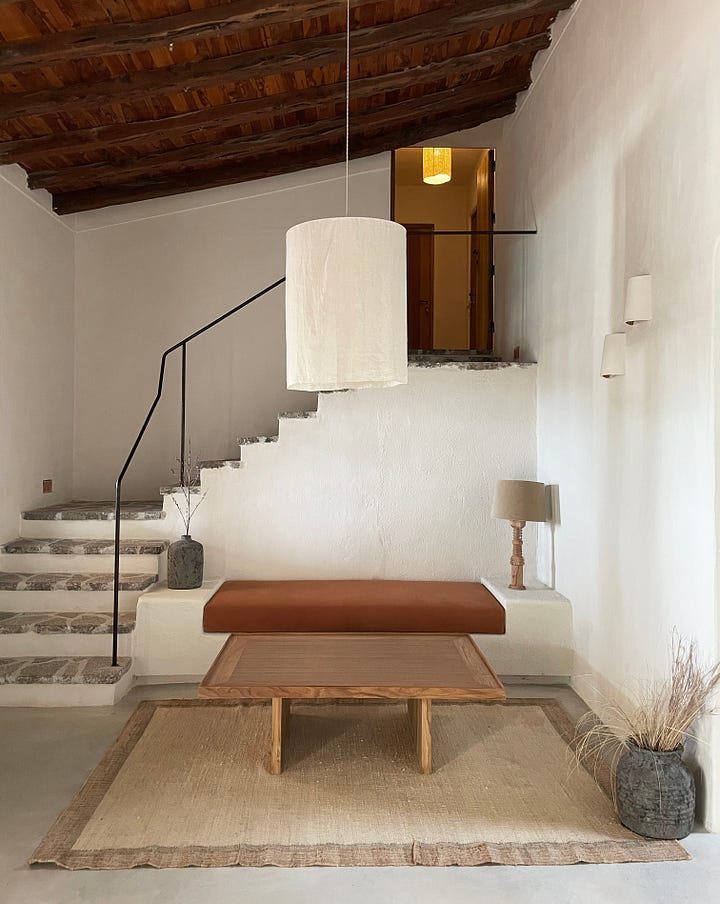
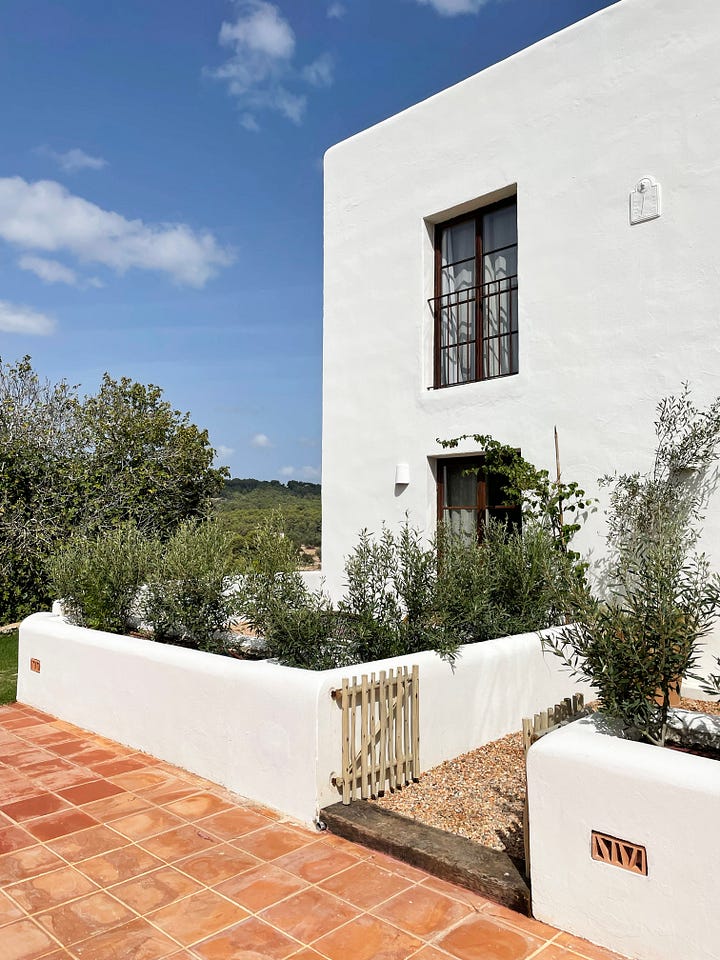
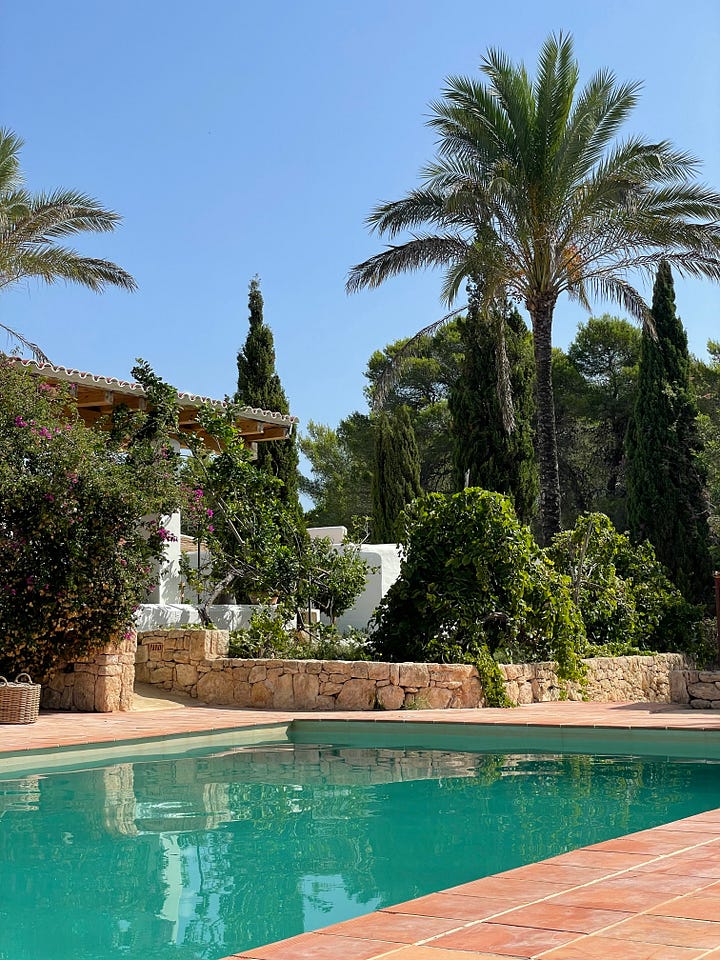
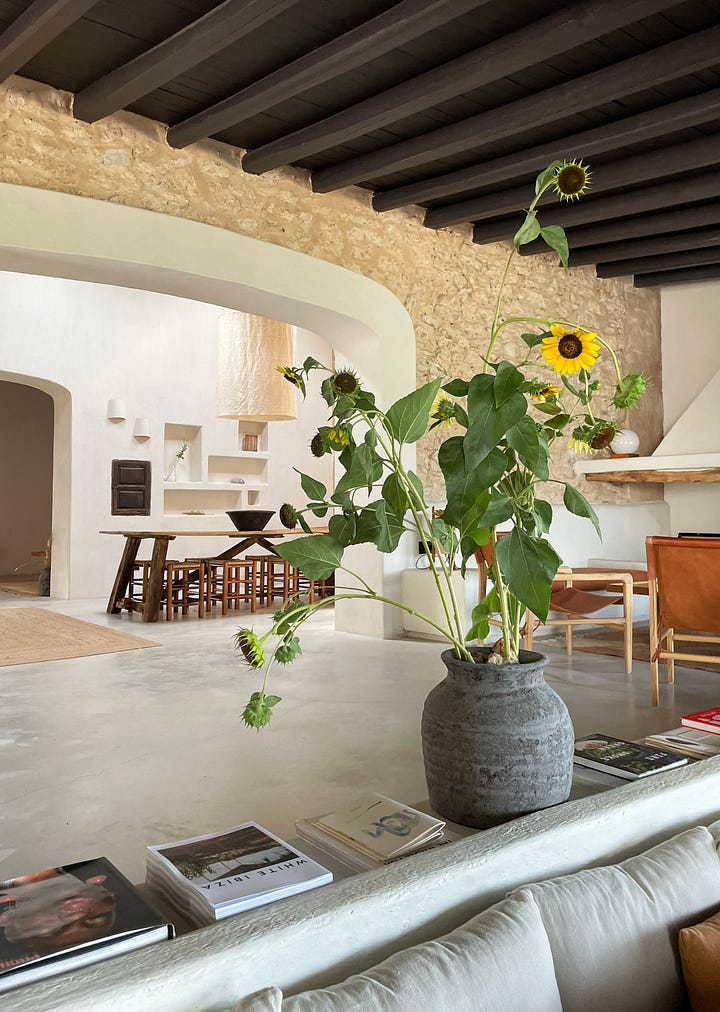
The property had only been open for a few months when we visited. During the renovation work, carried out by Lekuona Studio and Ibiza Interiors, the majority of the historic elements were thankfully retained and highlighted. The building’s whitewashed exterior, tiled roofs, terracotta-tiled terraces, wooden ceiling beams and dry-stone walls all create a very authentic atmosphere, albeit fresh and modernized. The spaces are both rustic and contemporary, with wooden furniture and handcrafted objects like stools and vases peppered through the interiors. A sense of calm and tranquility washed over us the moment we arrived, which we realized was partly due to the lack of music we’re so accustomed to hearing around the pools or through the interiors of other hotels. Instead, the birds, cicadas, and other wildlife provided the soundtrack, and the owners’ focus on natural elements (agua being water; madera meaning wood in Spanish) was made abundantly clear in the hotel’s design.
Guest Rooms & Amenities
There’s an almost monastic feel to Aguamadera’s plaster-lined bedrooms, thanks to the minimal furnishings, simple linen bedding and curtains, and dim lighting at night. Seven are located in the main house, while four larger suites and an additional room occupy the outbuildings that formerly housed livestock. Each of the rooms is bright and airy by day, then cozy after dark, and some are afforded their own courtyards and small pools. Ours faced the main pool from the finca’s ground floor, and was compact but had a comfy bed, good water pressure, and enough space to store our clothes and luggage away. Once we unpacked, our suitcases tucked neatly under the bed so that we didn’t have to trip over or look at them during our stay—and be constantly reminded that we weren’t there for long.

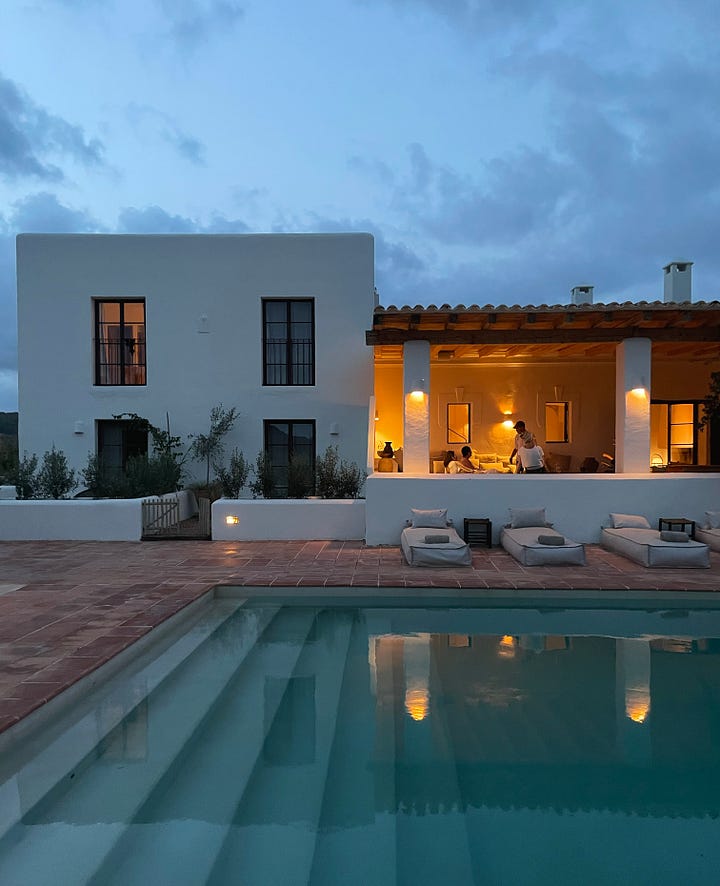
The main house has several spaces inside for unwinding, including a lounge with a large fireplace for the cooler months, while the front porch and pool terrace below also provide plenty of soft furnishings and beds for laying in the sun or shade. Unless another guest is talking loudly, it really is an oasis of calm, but you should come prepared to really do very little. The property does host a calendar of events and activities, from morning and sunset yoga to chillout DJ sets, and also has a dedicated wellness pavilion that offers massages, treatments and workshops with natural herbal products. But any real action on-site is few and far between.
Dining & Drinking
In keeping with agrotourism principles, Aguamadera grows the majority of its produce on-site and sources the remainder locally. This means that only uber-fresh ingredients are prepared in the wood-fired open kitchen within the main house, run by chef Gonzalo Cerrato Laguna. The small, cozy dining room creates the vibe of eating at someone’s home, and the food—particularly the veggies—is cooked perfectly, and served beautifully but unpretentiously. Natural wines that accompany dinner are also top-notch, and when the music did come on, it was Sade, which no one should ever complain about. Breakfast is served in the same space or al fresco on a terrace at the back of the property, and comprises whatever you’re in the mood for: a mix of fresh fruits, avocado toast, yogurt, granola cured meats, eggs, breads, preserves, coffee, and anything else they have on-hand is delivered to the table upon request.
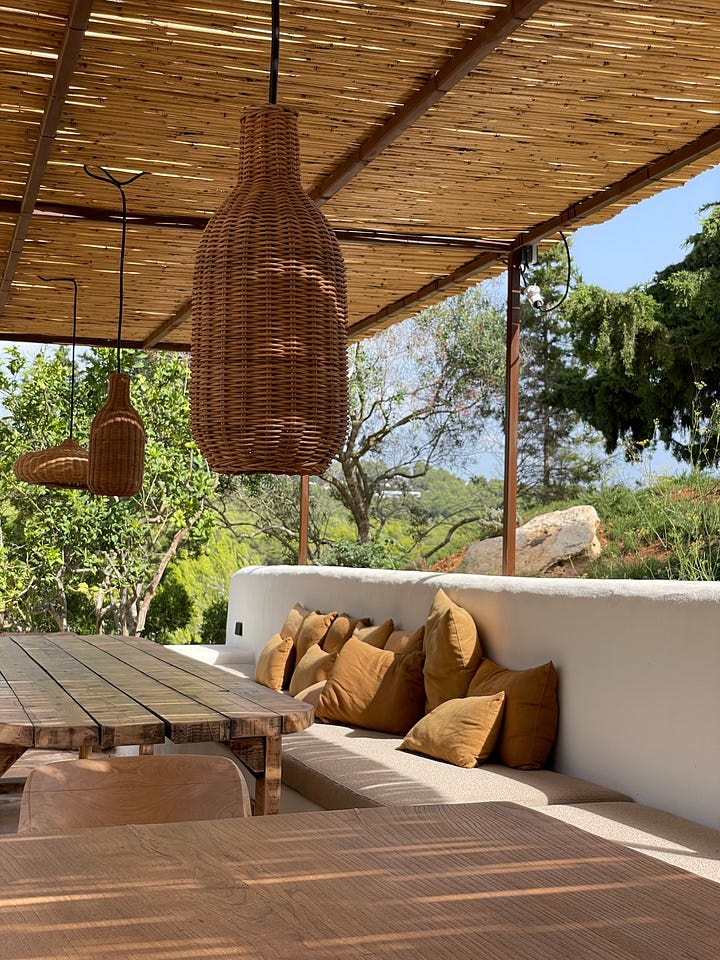

Since Aguamadera only has one small restaurant, we ventured out to several other establishments for dinners during the trip. A favorite was Casa Maca, a very scene-y spot just outside Ibiza Town at another finca-turned-hotel. The restaurant is much larger than Aguamadera’s, the menu more extensive, and the bustling atmosphere (it was packed!) offered a nice lively vibe-shift from the tranquility where we were staying. Yet our tolerance of the “scene” ended there. While Ibiza is renowned for its beach clubs, these were the least appealing to us overall. We stopped at a couple along the south coast for lunch or afternoon drinks, and the prices were astronomical, the service was awful, and the crowds were obnoxious. The only beach spot we found that wasn’t pretentious was the very casual Chiringay, which overlooks the clothing-optional gay beach at Platja des Cavallet. To get there, we had to drive past some unattractive salt flats (salt being Ibiza’s biggest export), and walk along a mostly flooded path through some trees that apparently are used as a cruising spot. So I wouldn’t go out of my way to recommend it.
Ibiza Town / Eivissa
Cutting a striking silhouette as soon as you drive away from the airport, at the island’s southern end, the fortified upper town—or Dalt Vila in Catalan—is packed tightly upon a small peak overlooking a natural harbor. At the top, Ibiza Castle and the 13th-century Cathedral of Nuestra Señora de las Nieves are surrounded by huge stone walls, which form a walkable ramped route up from the main town below. Once inside the fortifications, wandering the narrow streets feels like stepping into an episode of Game of Thrones, and although King’s Landing is modeled on and filmed in Dubrovnik, it could easily have been set here. Small boutiques, picturesque restaurants, and hole-in-the-wall bars are nestled between houses and small hotels. Even if the walking is tough, especially in the hear, the area is well worth spending a few hours exploring both by day and at night. We got to Eivissa from Cala Llonga by ferry, part of a handy water transportation network that serves Ibiza’s east coast, as well as the nearby island of Formentera. It even served drinks!
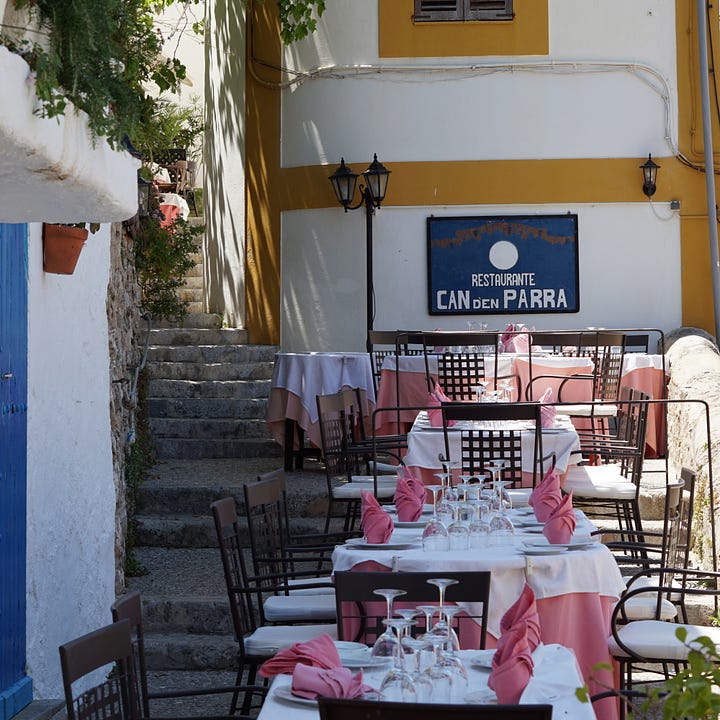
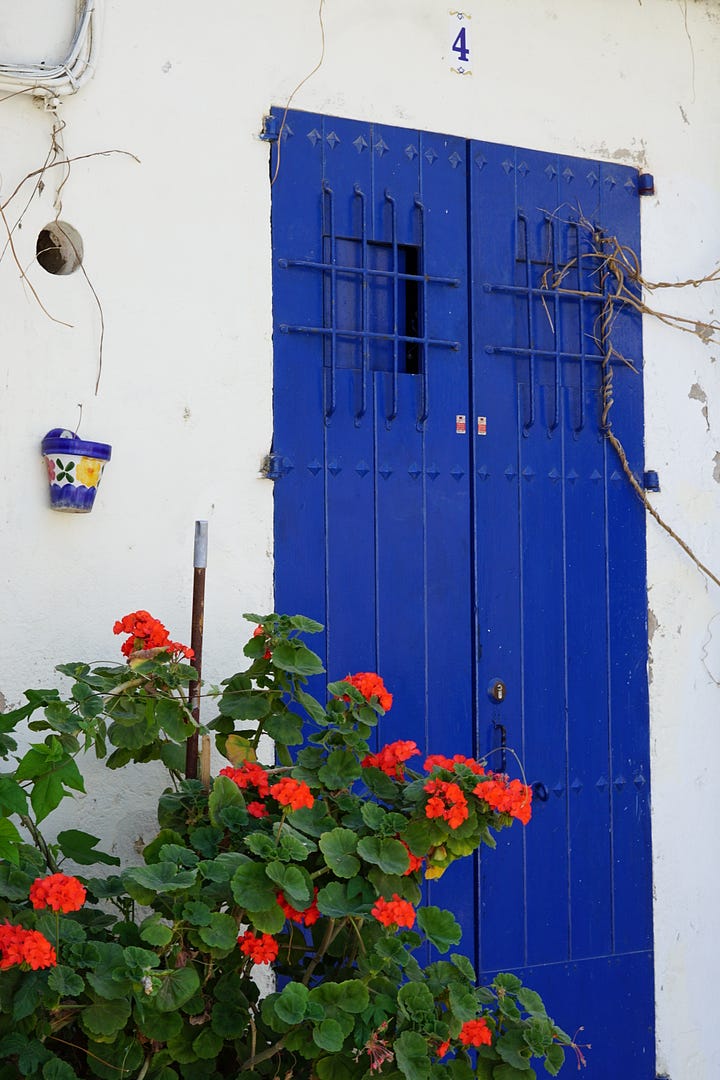
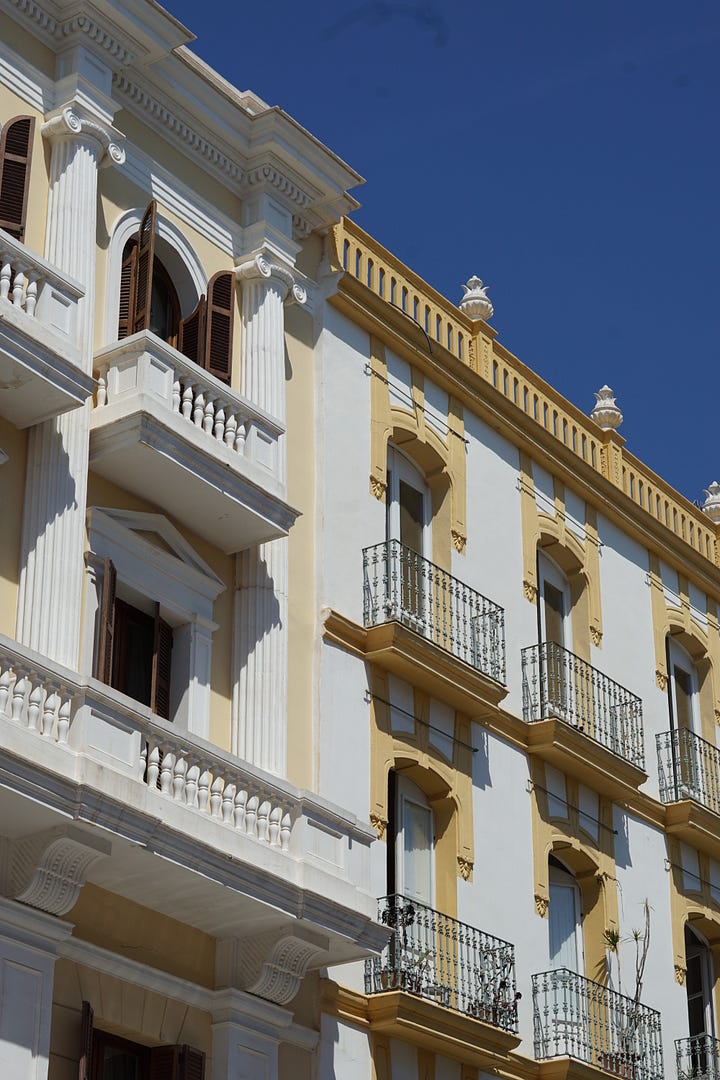

Several new hotels have opened within and just outside Dalt Vila over the past few years, including an outpost of The Standard, which has a chic rooftop offering great views and a fun vibe, and the Montesol Experimental, a new incarnation of the island’s first-ever hotel that features quirky pastel decor. The streets between the fort and the port are packed with restaurants and watering holes, including two narrow streets lined with cheesy gay bars that we jumped between. The atmosphere at night is jovial and lively, and did make us want to go clubbing after all, but our flight was early the next day. I’ve promised Jonathan we’d go out properly on our next (third) visit.
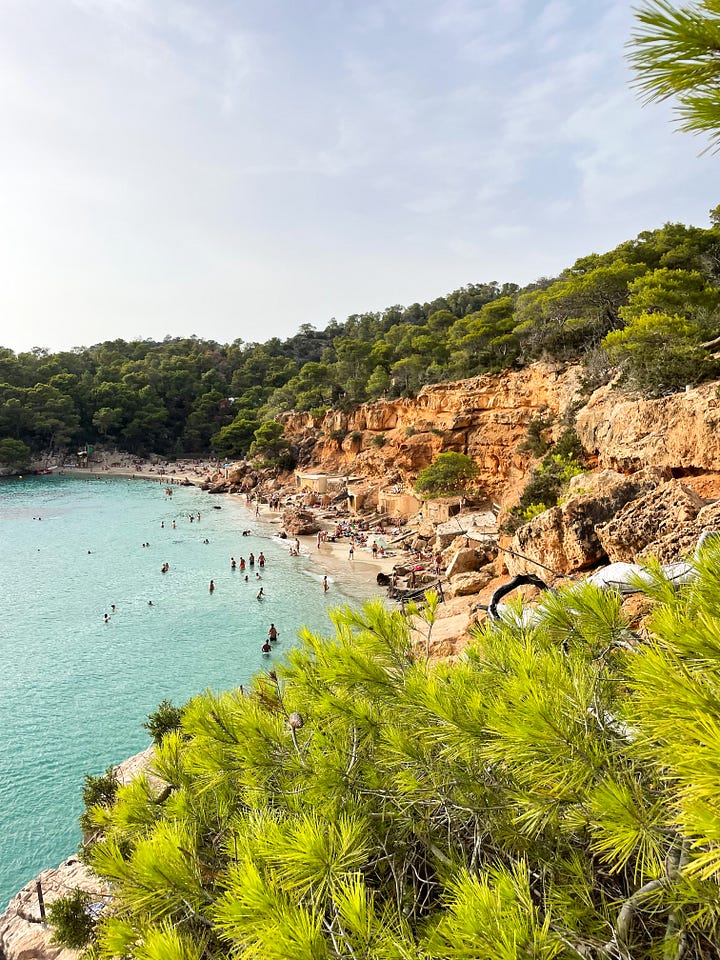
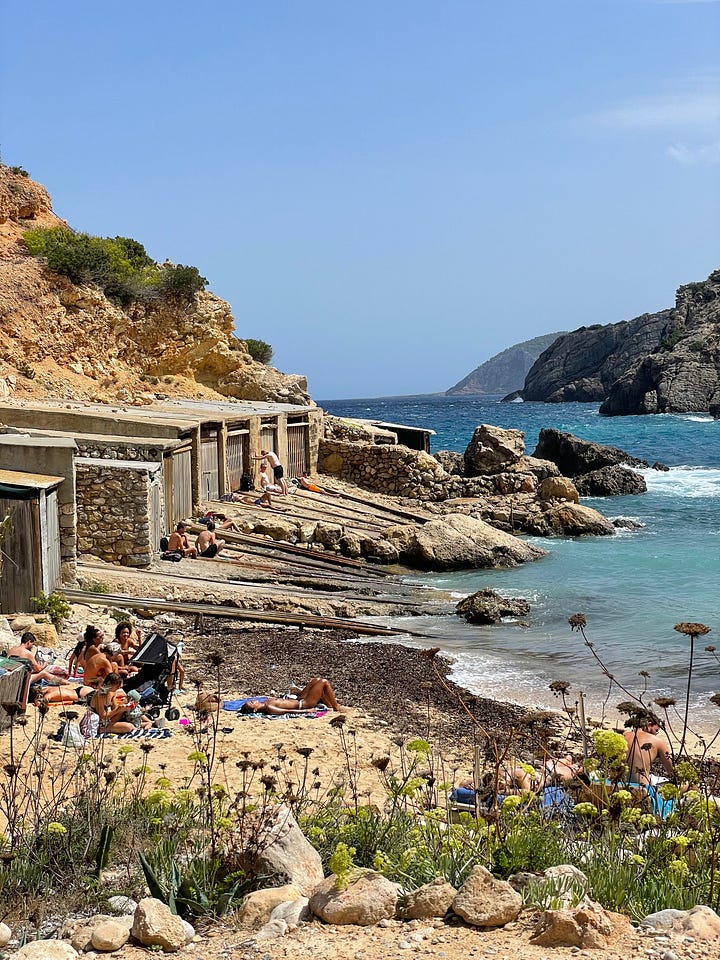
Hidden Beaches
The best part of our trip, hands down, was beach hopping around the island’s northern and western coasts. There are so many beautiful little coves tucked between the cliffs, where traditional boat houses built into the rock lead down to the clear turquoise waters. Our favorites included Cala d'en Serra, a tiny stony cove where just a handful of locals were sunbathing and a small beach bar offered cheap beers. It’s accessed via a track that passes an abandoned, partially constructed hotel, which is cool for photos. Another top spot was Cala Saladeta, which we had to scramble over the rocks to reach, but the trek was well worth it to watch the sunset from the warm shallow waters. The beach that we used for our engagement photos, Agua Blanca, is clothing optional and comprises a string of narrow sandy strips that hug close to the tall rocky escarpments. As mentioned previously, beware of the tides here!
Bougainvillea in Bloom
Across the island, which has a primarily neutral white, beige, rust and green palette, bursts of bright pink-purple are dramatically eye-catching and, at least for me, add so much joy and delight. The bougainvillea flowers cascade over many building facades and pergolas, both in rural and urban settings, imbuing them with color and character year-round. The most impressive blooms we spotted were in Dalt Vila, where one home was covered entirely in the plant, and Aguamadera also had a gorgeous bougainvillea climbing up and over the front porch. It is now my dream to have a “bougain-villa” one day, maybe even in Ibiza, and I will stop at nothing to achieve it. The fact that this was my takeaway from the trip, rather than a crazy hangover or come-down after nights of partying, says a lot really.
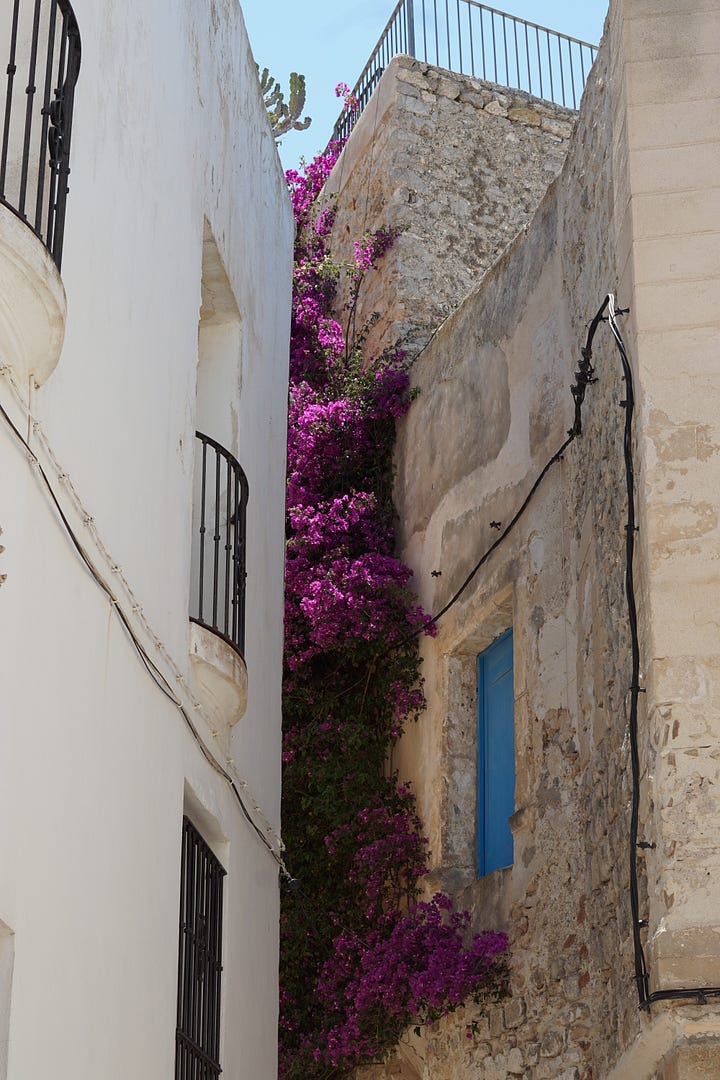
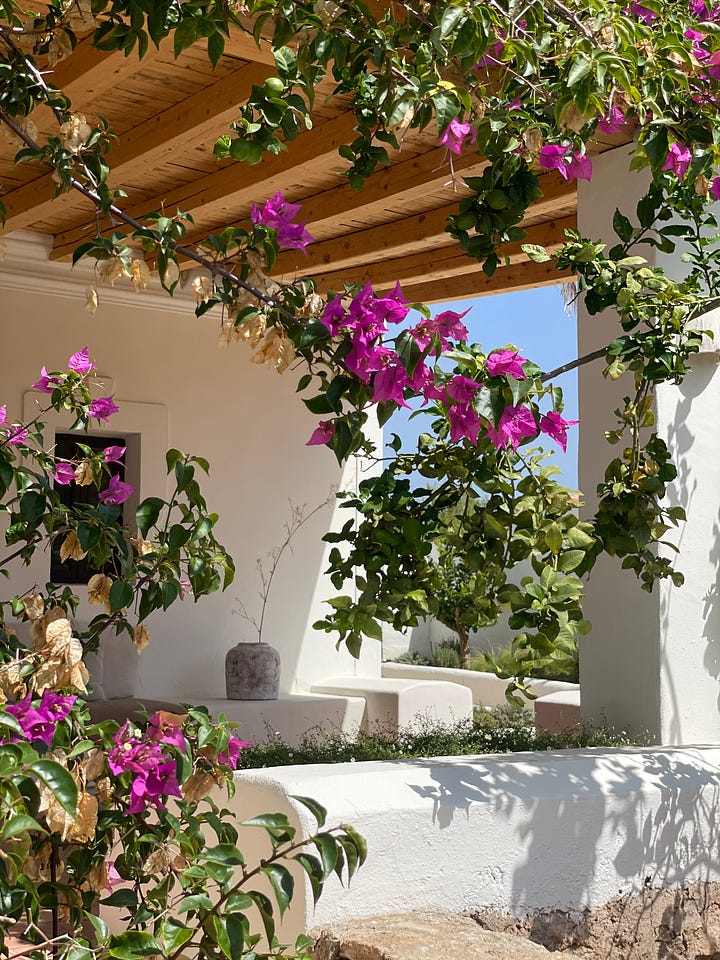
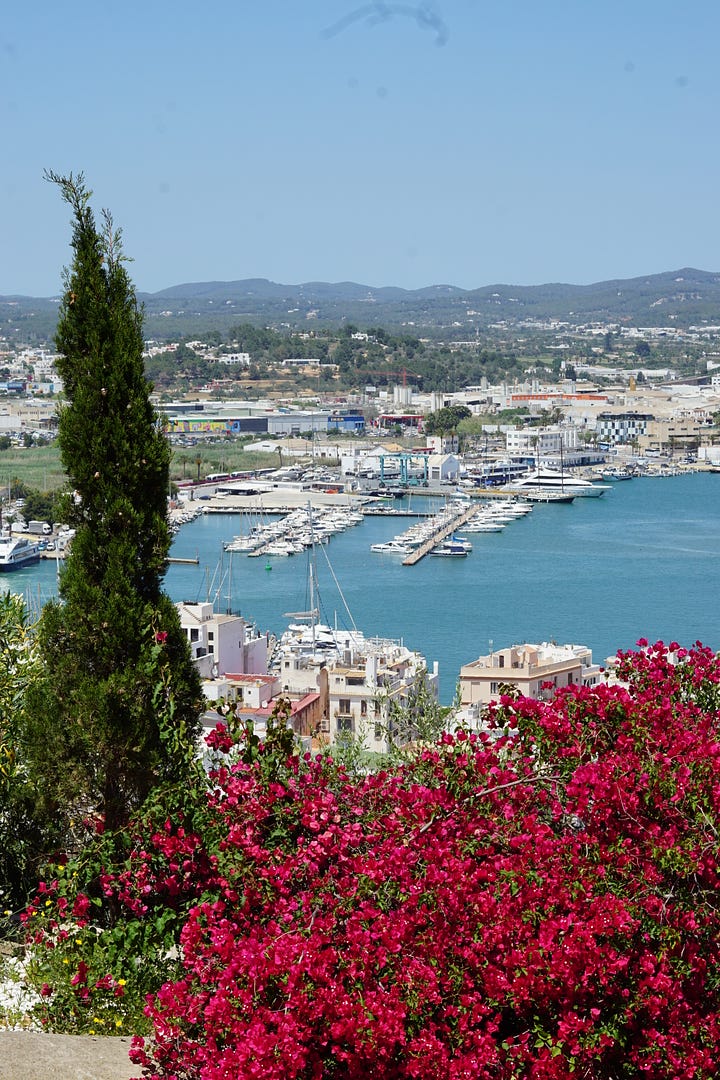
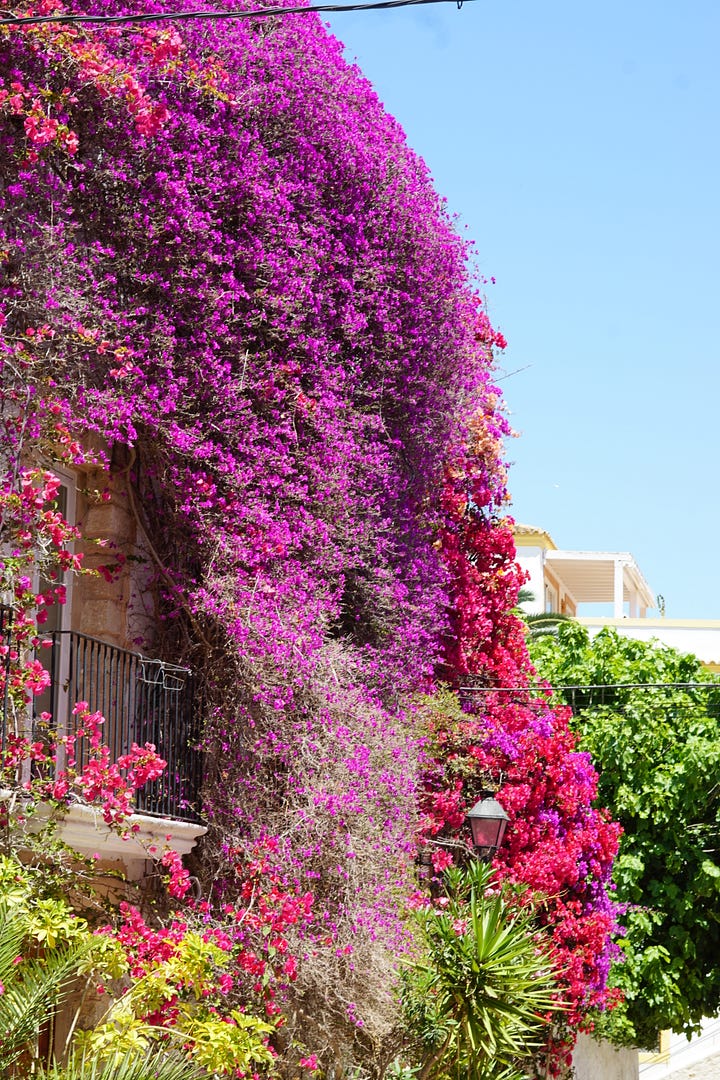
Thank You’s
To Carlota Sarda Caralps, Aguamadera’s then creative director, thank you for the DM invitation to stay at your property and see Ibiza in a light I was not expecting. You sparked an obsession with this magical island. Thanks always to Jonathan Marotto for being the best travel partner, I can’t wait to come back to Ibiza again and again with you, since it now holds a very special place in our story. And props to Kevin Correa for taking on the third-wheel role with ease, and ordering the most expensive item on the menu at every restaurant.


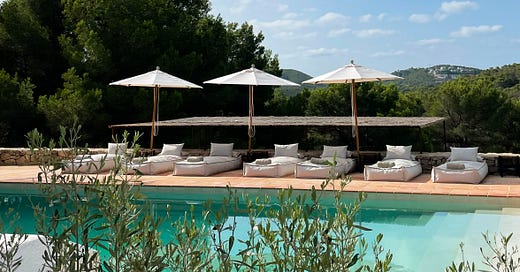



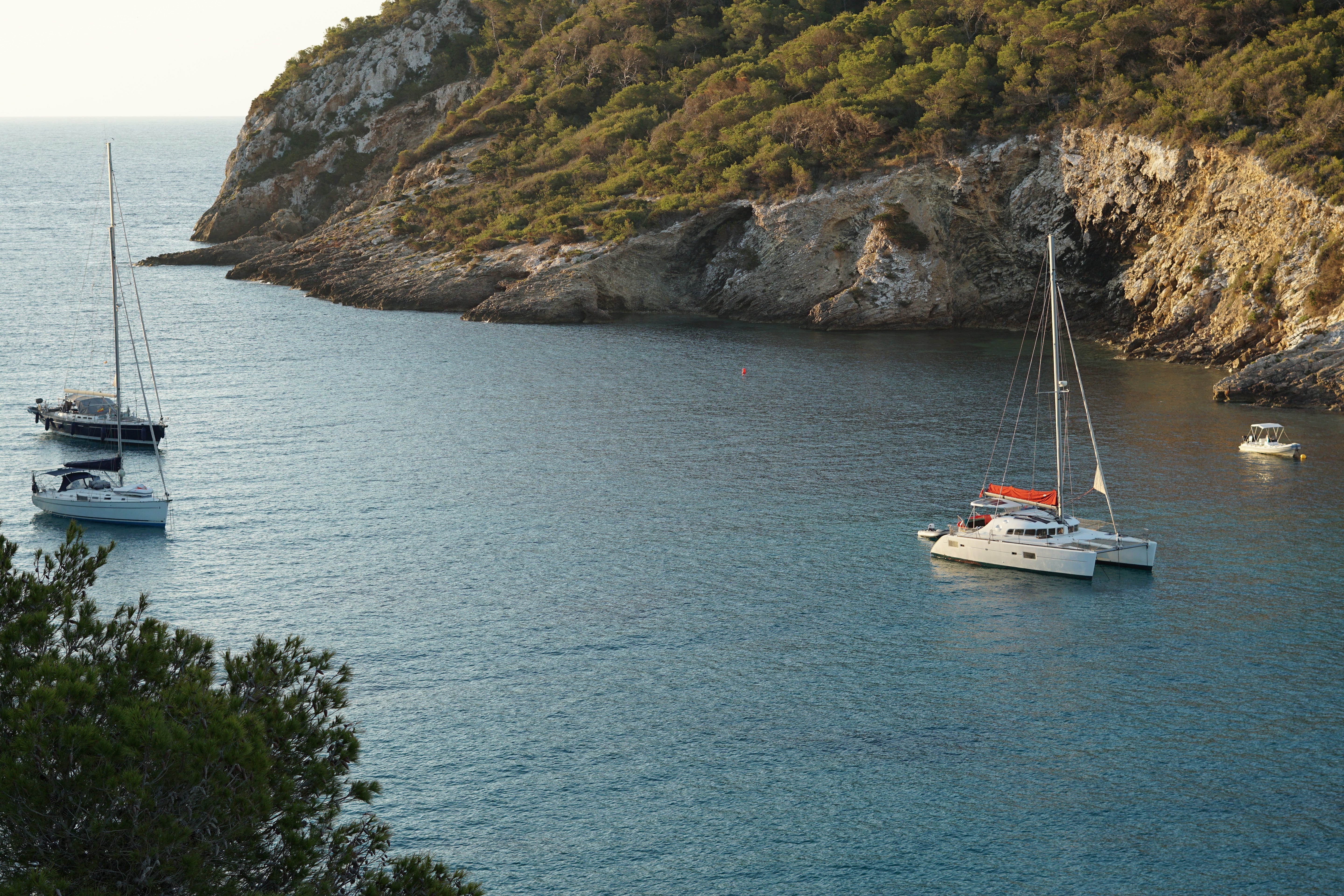
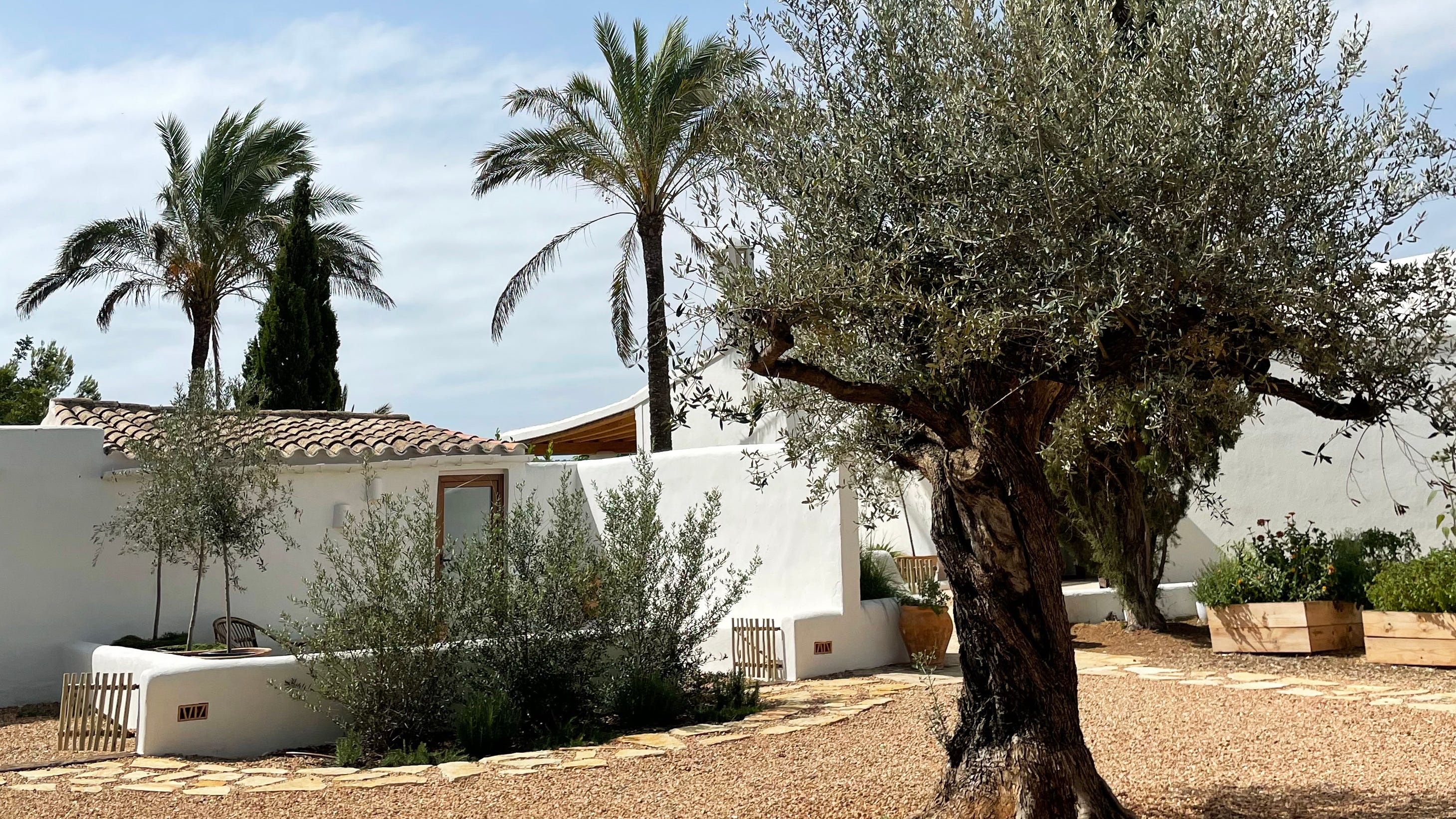
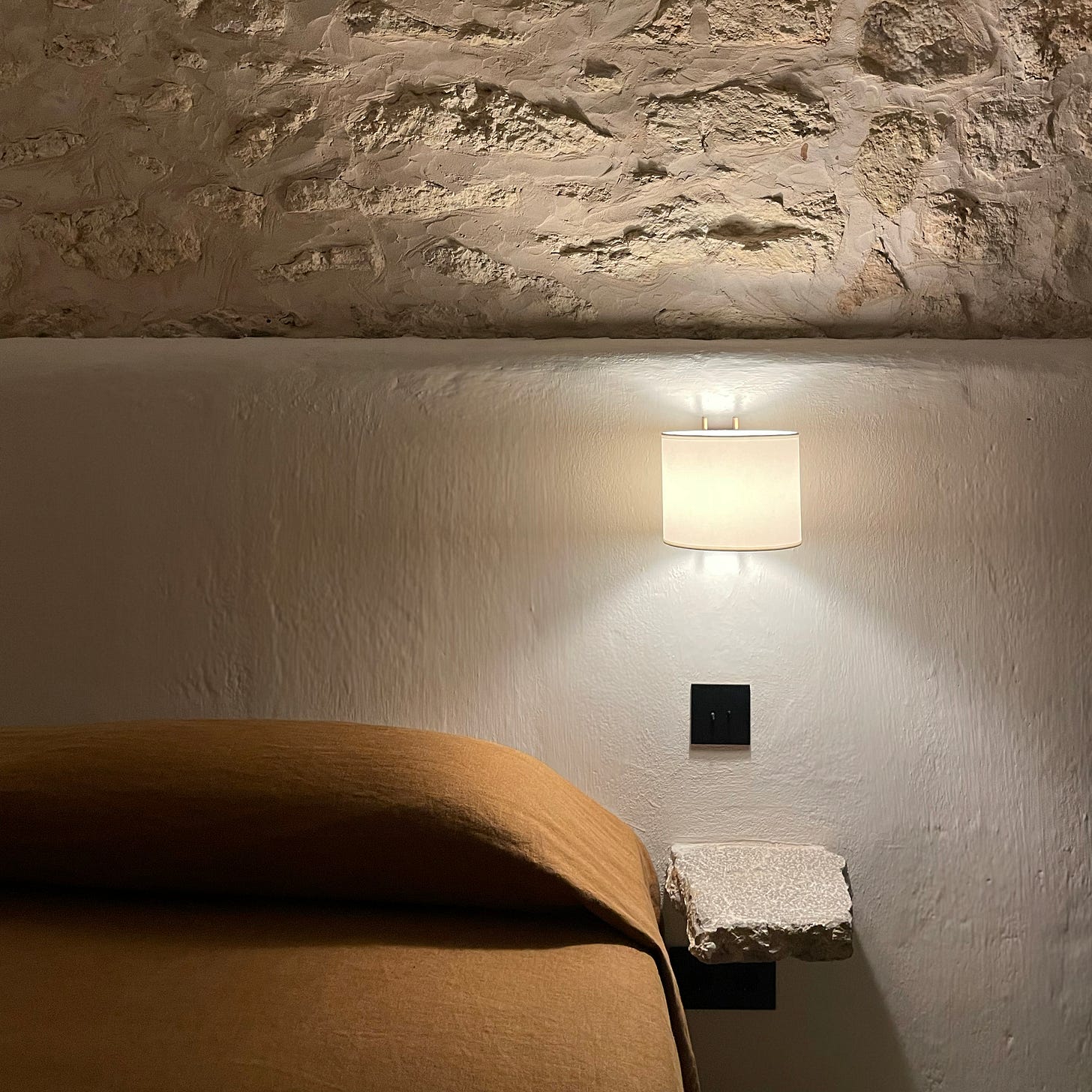
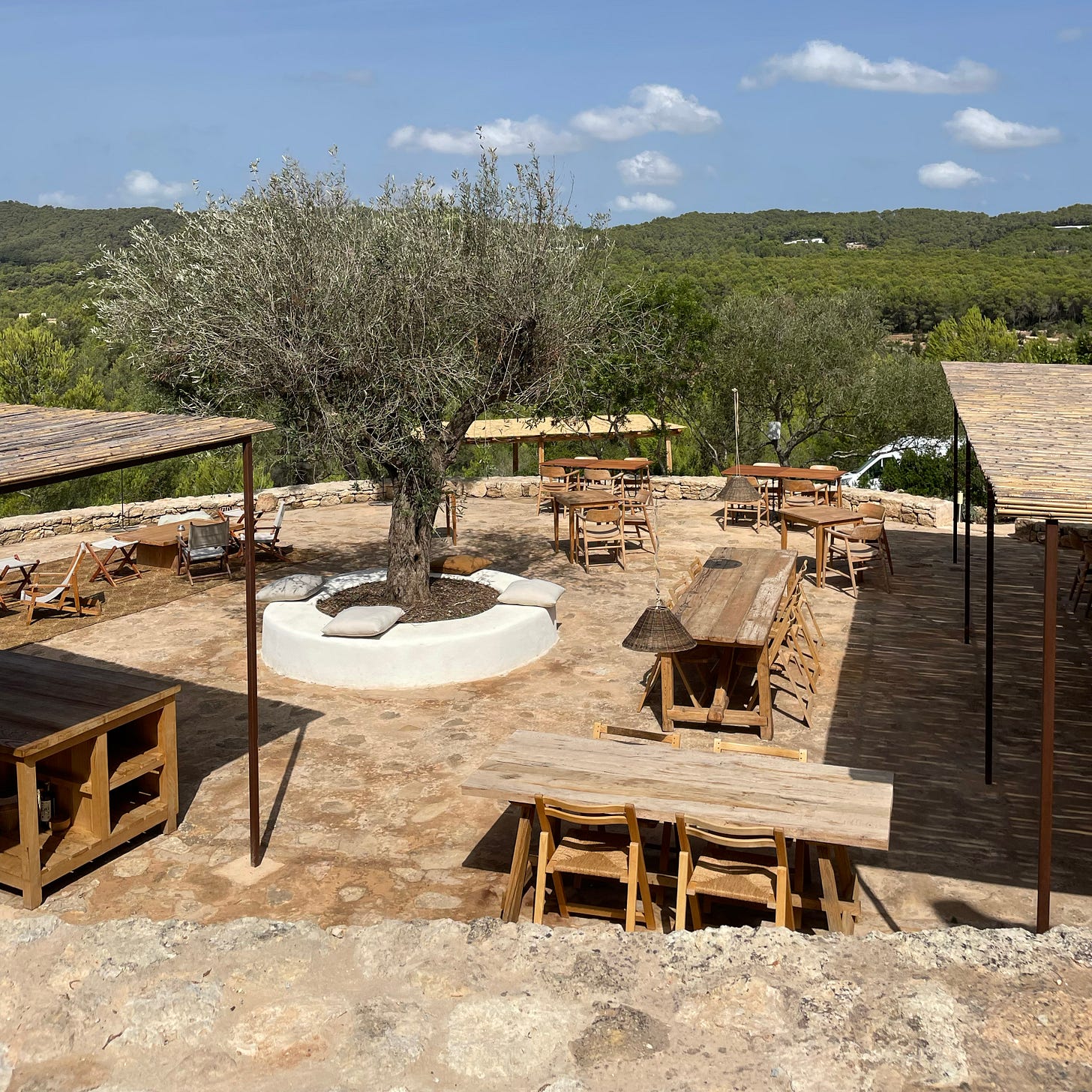
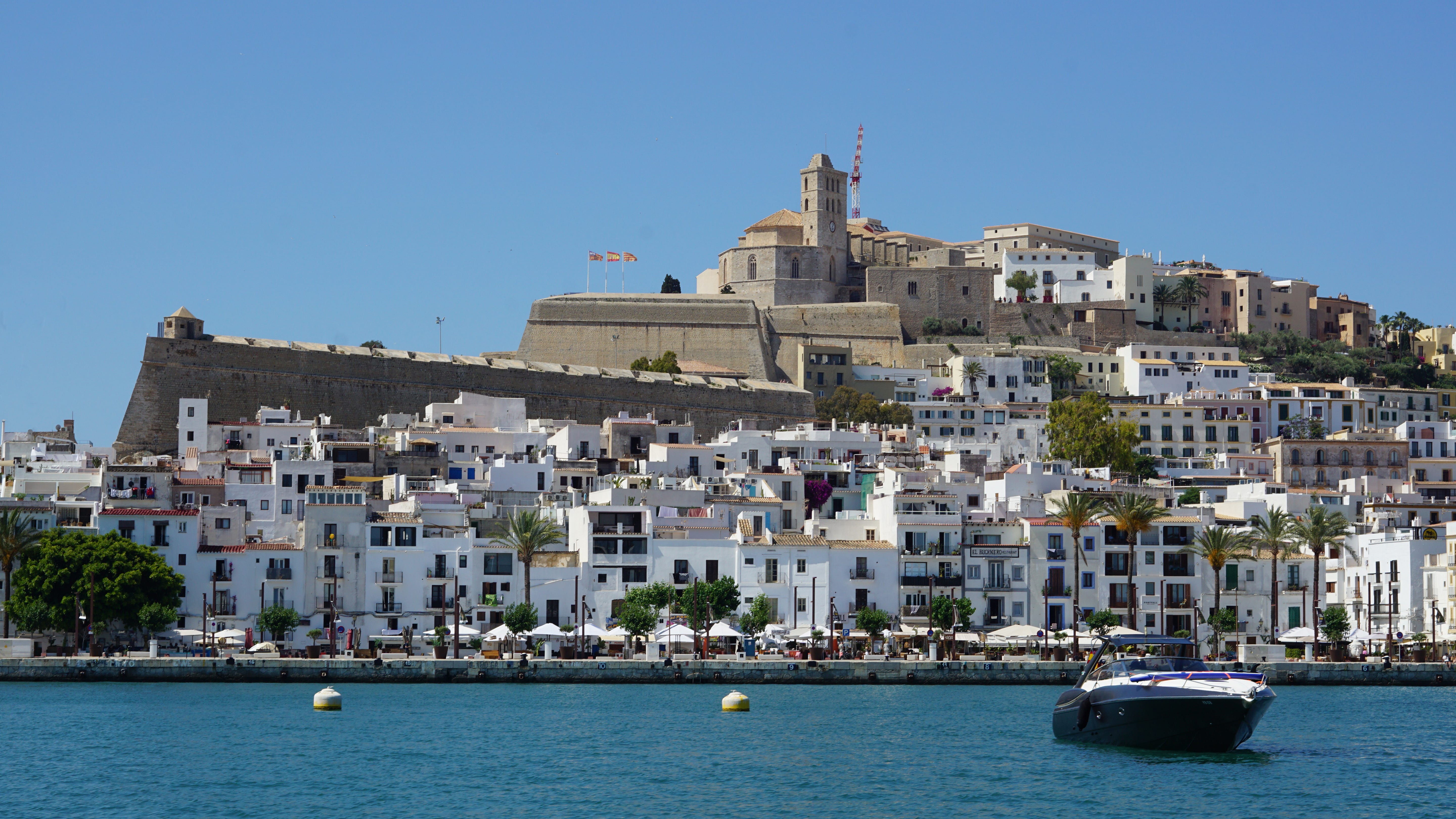
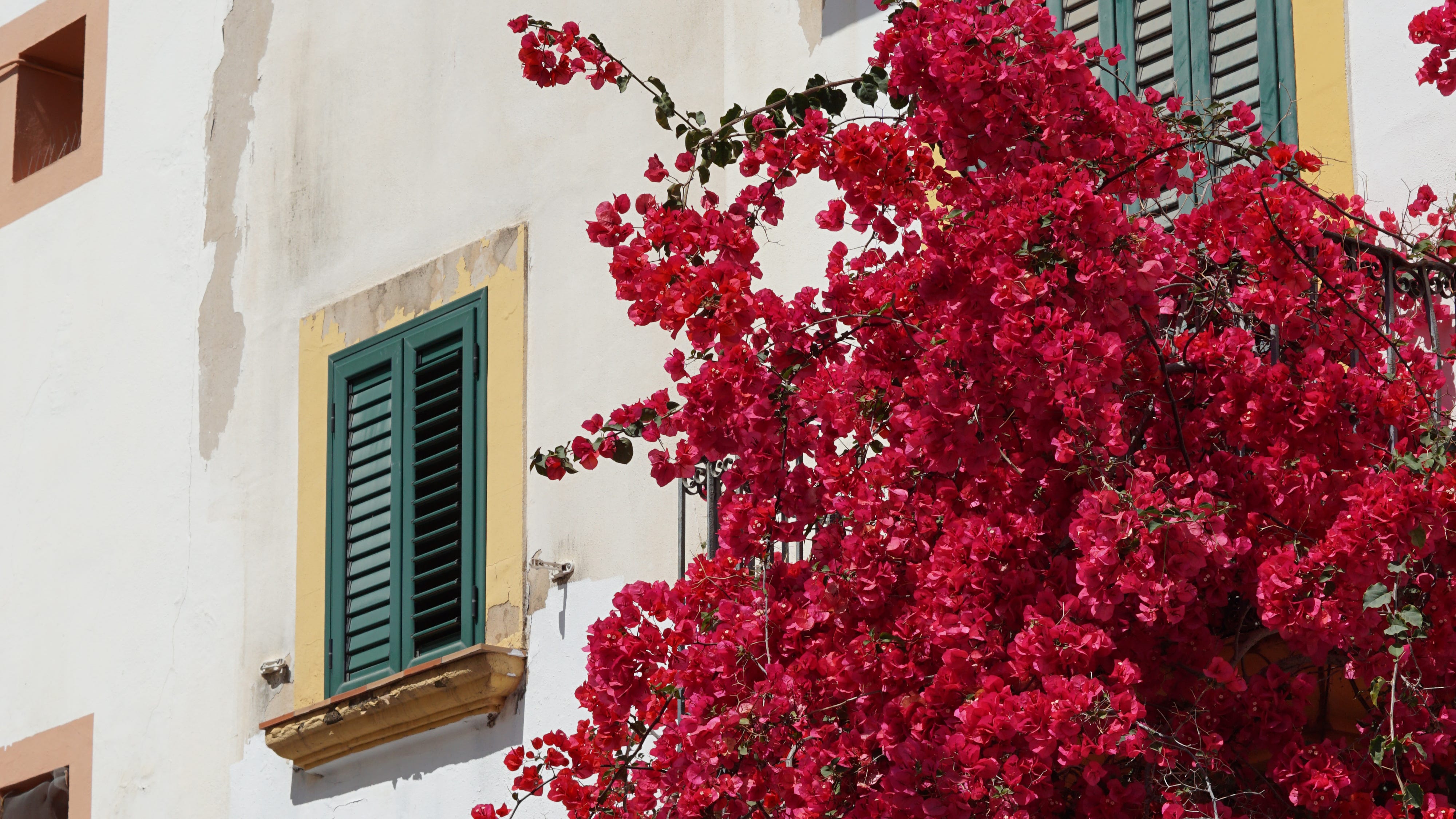
Absolutely stunning